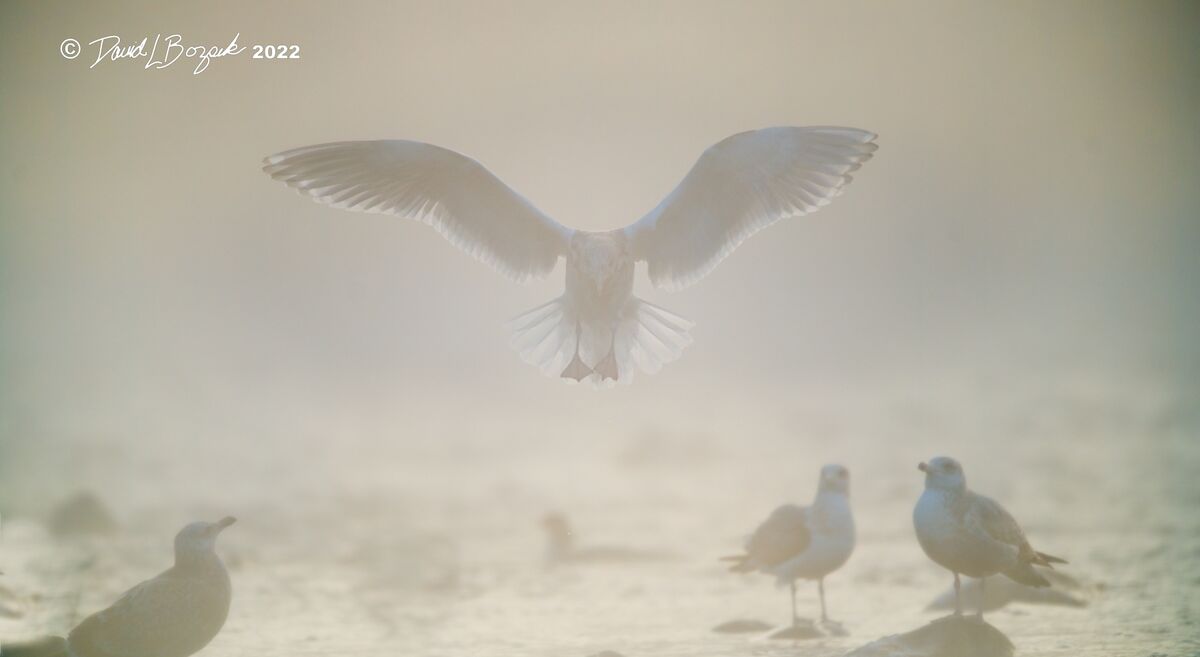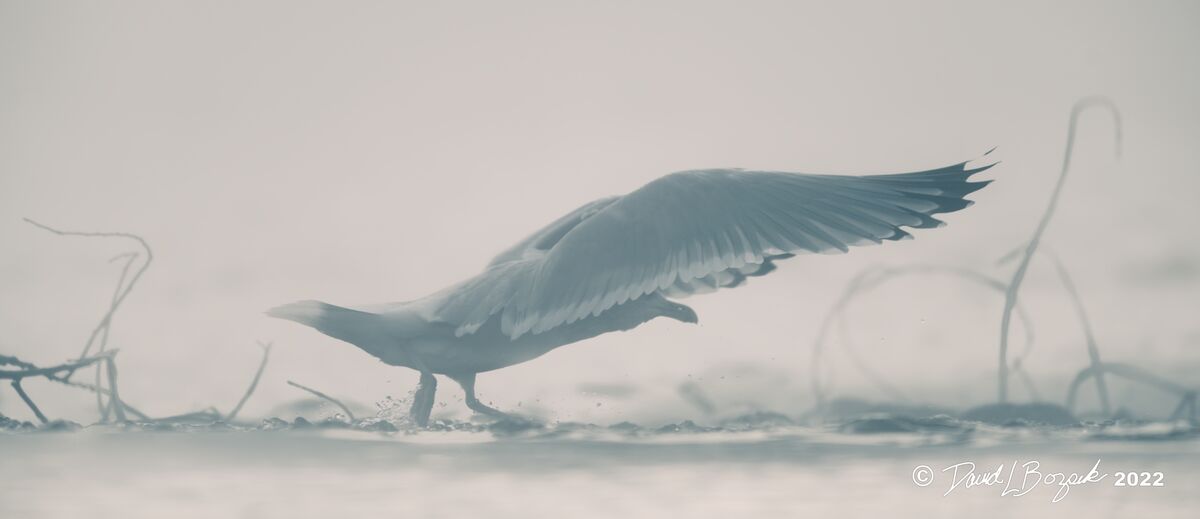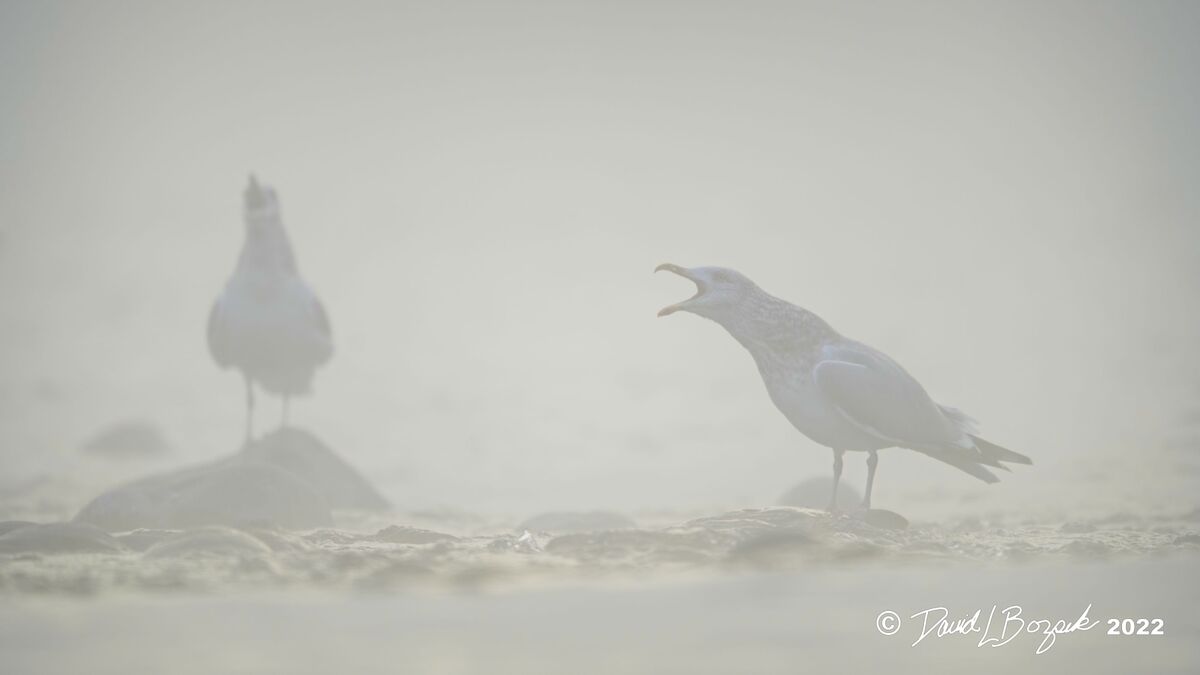"Mind" is a bit foggy this morning.
Dec 19, 2022 14:18:46 #
Enjoy. I love getting out when the weather is more photographically challenging. Common place subjects, but I find the foggy atmosphere appealing. Enjoy.
Dec 19, 2022 14:22:21 #
Caption for the last one:
"Okay Ralph, quit with the fog horn sounds!"
"Okay Ralph, quit with the fog horn sounds!"
Dec 19, 2022 14:36:48 #
Longshadow wrote:
Caption for the last one:
"Okay Ralph, quit with the fog horn sounds!"
"Okay Ralph, quit with the fog horn sounds!"
 I enjoy shooting gulls because they are so interactive. One can implement them with a text bubble so easily, and share them with others.
I enjoy shooting gulls because they are so interactive. One can implement them with a text bubble so easily, and share them with others.Dec 19, 2022 14:48:52 #
Bozsik wrote:
Enjoy. I love getting out when the weather is more photographically challenging. Common place subjects, but I find the foggy atmosphere appealing. Enjoy.
Fantastic set!!!
Dec 19, 2022 14:50:14 #
Bozsik wrote:
Enjoy. I love getting out when the weather is more photographically challenging. Common place subjects, but I find the foggy atmosphere appealing. Enjoy.
A beautiful, otherworldly look to all of them




Dec 19, 2022 14:55:08 #
Dec 19, 2022 15:04:36 #
This is an excellent set. Fog is always challenging. There are several different types of fog. The most common is a radiant fog that doesn’t lift right away. It may take several hours until everything warms up. For an interesting effect, place a colored or LED light on the ground to change an outherworldly experience.
Dec 19, 2022 15:26:25 #
Bozsik wrote: I enjoy shooting gulls because they are so interactive. One can implement them with a text bubble so easily, and share them with others.
I enjoy shooting gulls because they are so interactive. One can implement them with a text bubble so easily, and share them with others.
 I enjoy shooting gulls because they are so interactive. One can implement them with a text bubble so easily, and share them with others.
I enjoy shooting gulls because they are so interactive. One can implement them with a text bubble so easily, and share them with others.
Dec 19, 2022 16:00:24 #
Dec 19, 2022 16:25:34 #
Dec 19, 2022 16:55:22 #
Bozsik wrote:
Enjoy. I love getting out when the weather is more photographically challenging. Common place subjects, but I find the foggy atmosphere appealing. Enjoy.
I enjoy shooting in the fog, also.
Dec 19, 2022 18:12:25 #
Dec 19, 2022 20:23:51 #
Bozsik wrote:
Enjoy. I love getting out…..
This is an excellent set. Fog is always challenging and can give new meaning to a dull photograph. There are several different types of fog. The most common is a radiant fog that doesn’t lift right away. It may take several hours until everything warms up. For an interesting effect, place a colored or LED light on the ground to change to an out worldly experience.
Radiation Fog: This fog forms when all solar energy exits the earth and allows the temperature to meet up with the dew point. The best condition to have radiation fog is when it had rained the previous night. This help to moisten up the soil and create higher dew points. This makes it easier for the air to become saturated and form fog. However, the winds must be light less than 15 mph to prevent moist and dry from mixing.
Precipitation Fog: This is fog that forms when rain is falling through cold air. This is common with a warm fronts but it can occur with cold fronts as well only if it's not moving too fast. Cold air, dry at the surface while rain is falling through it evaporates and causes the dew point to rise. This saturation forms fog.
Advection Fog: This type of fog forms from surface contact of horizontal winds. This fog can occur with windy conditions. Warm air, moist air blows in from the south and if there is snow or cool moisture on the ground it will come in contact with the warm, moist winds. This contact between the air and ground will cause the air blowing in to become cool. Then dew point rises and creates high humidity and forms fog.
Steam Fog: This type of fog is commonly seen in the Great Lakes but can be seen on any lake. This forms during the fall season. As summer ends, water temperatures don't cool right away but air temperature does. As a mass of dry, cold air moves over a warmer lake the warm lake conducts warm, moist air into the air mass above. This transport between the lake and air evens out. This corresponds to the second law of thermodynamics and this law state "any two bodies that come into contact, the system will become equilibrium state." Steam fog does not become very deep but enough to block some of the sunlight.
Upslope Fog: This fog forms adiabatically. Adiabatically is the process that causes sinking air to warm and rising air to cool. As moist winds blow toward a mountain, it up glides and this causes the air to rise and cool. The cooling of the air from rising causes to meet up with the dew point temperature. Fog forms on top of the mountains.
Valley Fog: Valley fog forms in the valley when the soil is moist from previous rainfall. As the skies clear solar energy exits earth and allow the temperature to cool near or at the dew point. This form deep fog, so dense it's sometimes called tule fog.
Freezing Fog: Freezing fog occurs when the temperature falls at 32°F (0°C) or below. This fog produces drizzle and these tiny droplets freeze when they come into contact with an object. But at the same time there is sublimation going on.
Ice Fog: This type of fog is only seen in the polar and artic regions. Temperatures at 14 F (-10°C) is too cold for the air to contain super-cooled water droplets so it forms small tiny ice crystals.
Dec 20, 2022 00:04:11 #
Scruples wrote:
This is an excellent set. Fog is always challengi... (show quote)
Thanks for the information. Didn't realize there were that many different kinds.

Dec 20, 2022 07:55:59 #
If you want to reply, then register here. Registration is free and your account is created instantly, so you can post right away.











